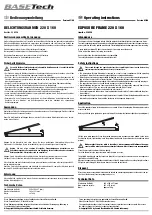
CHAPTER 2
2 - 17
COPYRIGHT ©
2000 CANON INC. CANOSCAN D660U REV.0 JULY 2000 PRINTED IN JAPAN (IMPRIME AU JAPON)
3. Shading correction
When the CCD reads a document of even density, the image signal corresponding to each
pixel is not uniform for the following reasons.
1) Light intensity of the scanning lamp is not uniform.
2) There is variation in the sensitivity of the light phototransistors.
3) There is a slight output from the light phototransistors even when there is no input.
These variations are corrected by the shading correction. Calibration data is used as
standard density data when scanning a document. Scanned image data is compared to the
standard density data for the image data correction.
4. Gamma correction
Shading-corrected red, green and blue image data are divided uniformly into 16384
gradations according to the document density. The contrast and density of this image data are
adjusted by the gamma correction. The ASIC writes gamma curve specified by the host
computer into the buffer RAM before scanning a document. Image scan starts and the image
data input to the buffer RAM is converted by the gamma curve data and is output.
5. Resolution conversion
1) Resolution conversion in the horizontal scanning direction
Basic resolution is 600 dpi, and selective at 600 dpi, 300 dpi, 150 dpi, and 75 dpi.
Resolution conversion in the horizontal scanning direction is performed by averaging the
image data of the basic resolution as shown in Figure 2-16.
Figure 2-16
A
B
C
D
E
F
G
H
A'
C'
E'
G'
A'=(A+B)/2
C'=(C+D)/2
E'=(E+F)/2















































